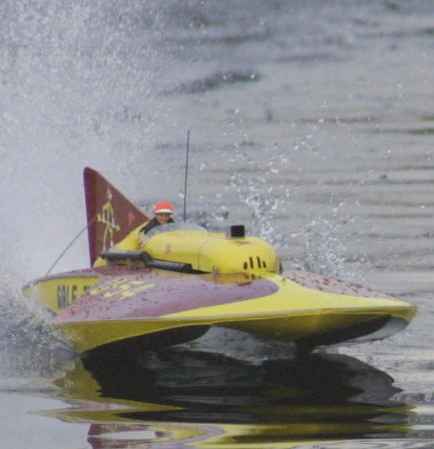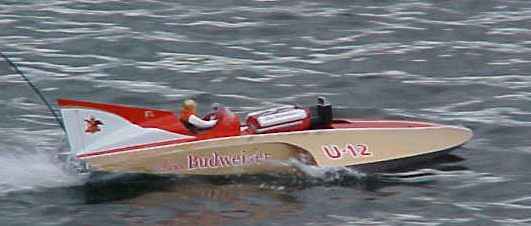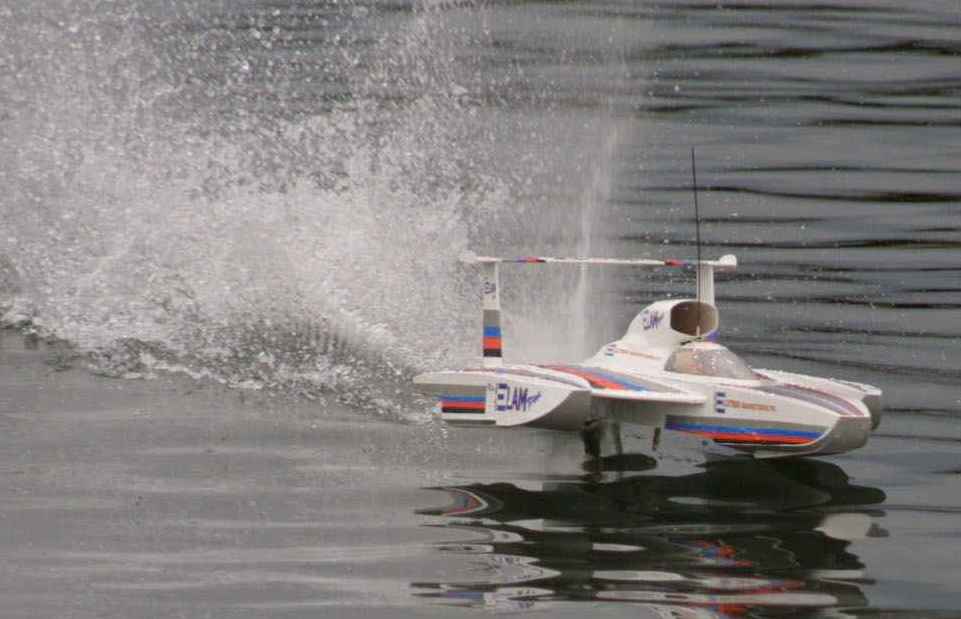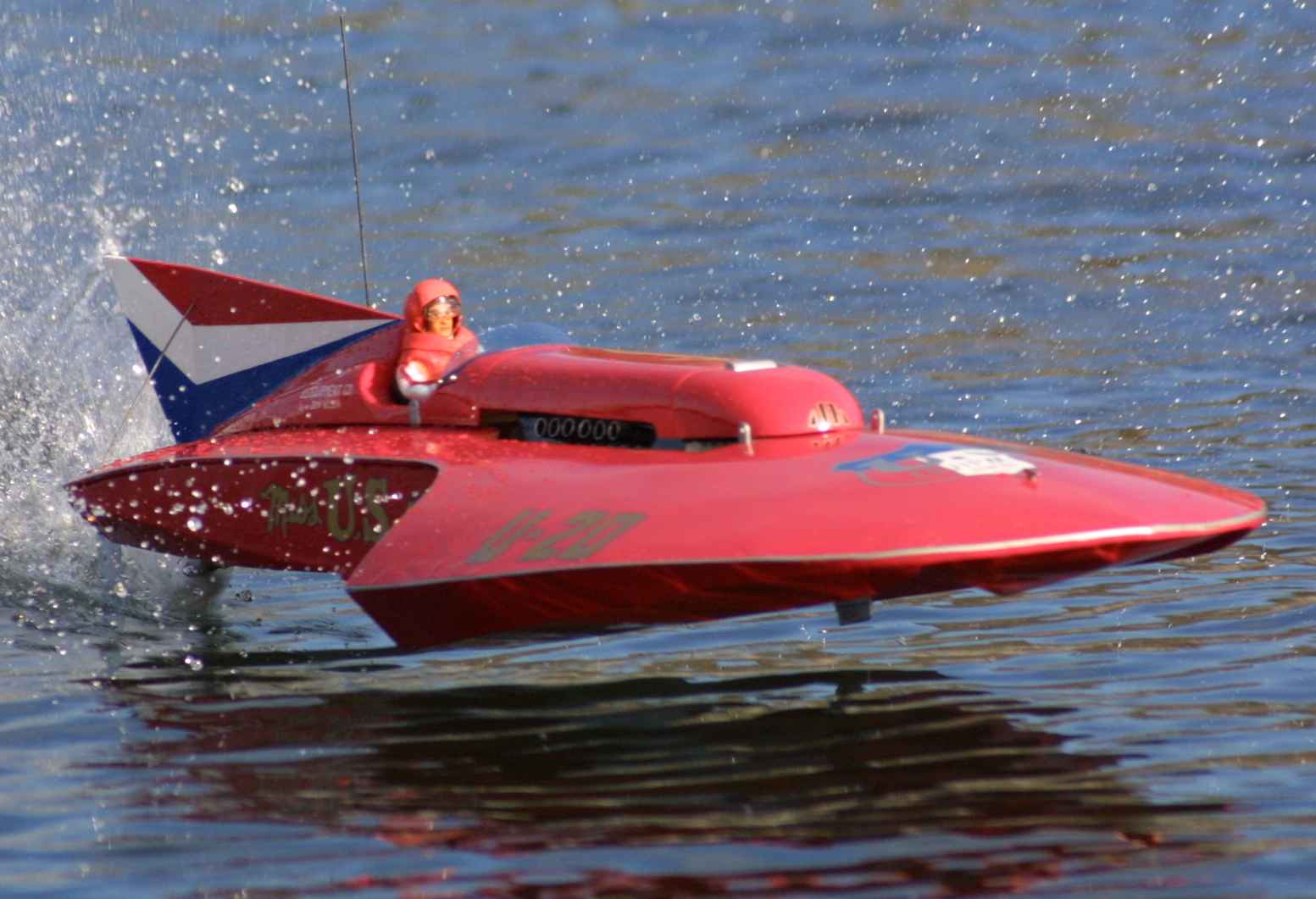|








|
In 1993 two Seattle 1/16th scale fast electric hydroplane enthusiasts, Pete Schille and Jon Zimmerman decided that they wanted to try something new: build large electric scale hydroplanes. Like many other racers of the time, they were disenchanted with the direction that 1/16th scale racing had gone. Speed had more |

|
importance than scale. Racing had turned into an "arms race" in which the deepest pockets had the best chance of winning. The technology was turning over quickly, and brushless motors and exotic batteries became expensive. Driving was not as much skill as it was putting on a large turn fin and rudder. To many in our club, it resembled slot car racing more than R.C. hydroplane racing. |
|

|
A new club of model hydroplanes was formed in 1994. All boats were to be classic "round bow" designs from the 1950's, 1960's and 1970's. Later this was modified to include |
pre-1970 pickle forked designs. There would be an emphasis on workmanship and scale authenticity. Unique features would include scale skid fins for realistic cornering and unlike other model boat classes; these hydroplanes would turn left just like the real things. Power plants and drivelines would be the same: an Astroflight 25 5-turn cobalt motor, 12 sub-c NiCad batteries (no larger than 2000mah,) and a solid prop shaft (no flex shafts here). |
|

|
Yes there are faster boats out there,but the point of this class is to keep a level playing field. Our club members have invested in .25 Astroflight technology and 2000 mah batteries (changed to 2400 for 2002). R.C. hydroplane |
racing is an expensive hobby and we do not want to drive any of our faithful or new members with the thought of having to "buy up" to remain competitive. Their performance is stunning for their great size (approximately 36" long). In the spring of 2001 our boats were captured with a radar gun in the 38 MPH range. Racing has been well matched with multiple race winners each season and over the past 10 years the club has grown to over 20 members. Brushless motors and high tech batteries could get our boats really moving, but the financial investment is the limit. |
2001 marked some changes in Classic Thunder. The "round bow" boats would constitute Division I and a new classification of boats was instituted: Division II or boats from the 70's and later. While Division I rules would remain unchanged, Division II boats |

|
could use up to 14 cells and any single power plant. Flex shafts are allowed in this class. These two classes race separately, but the other specifications are similar: scale skid fins, left hand turning, craftsmanship, and attention to scale. |
|







|
